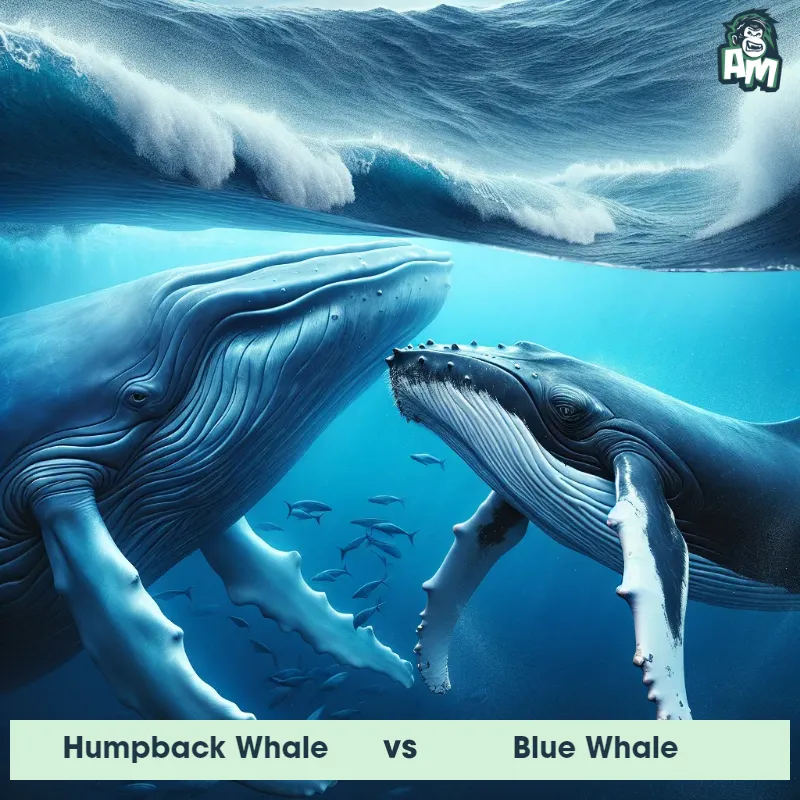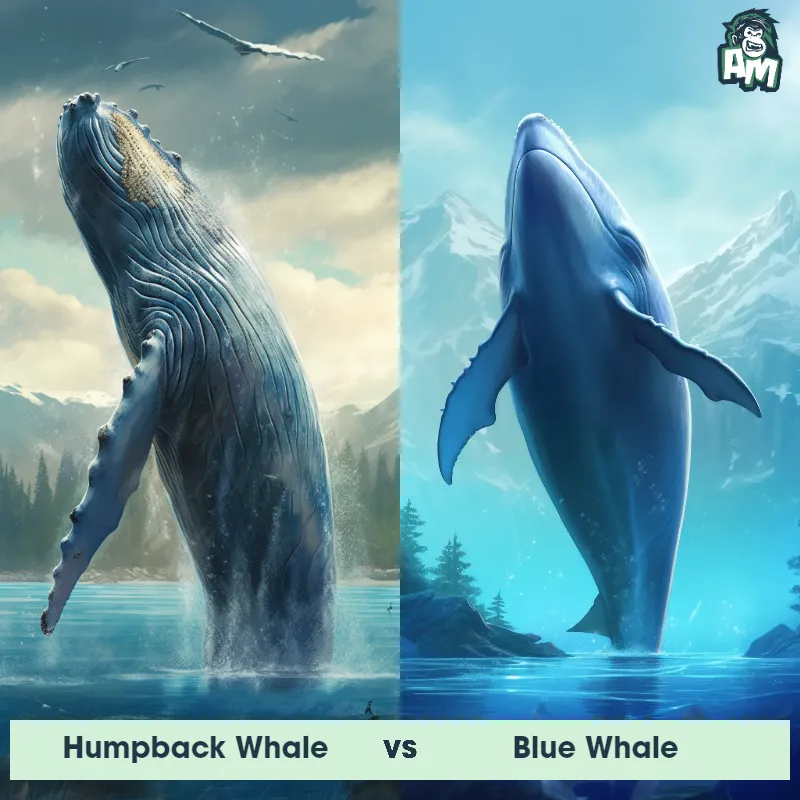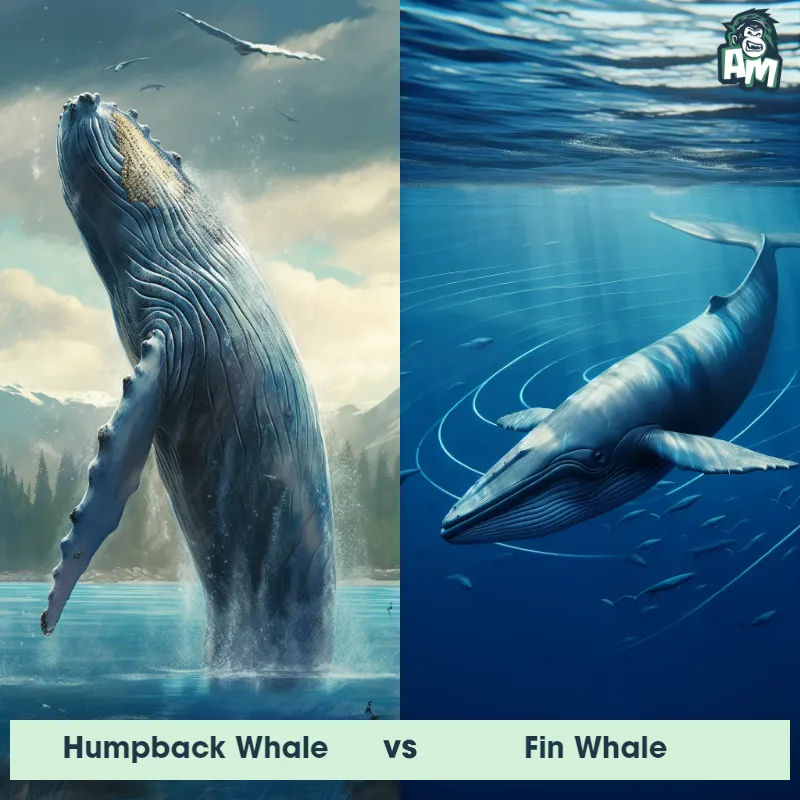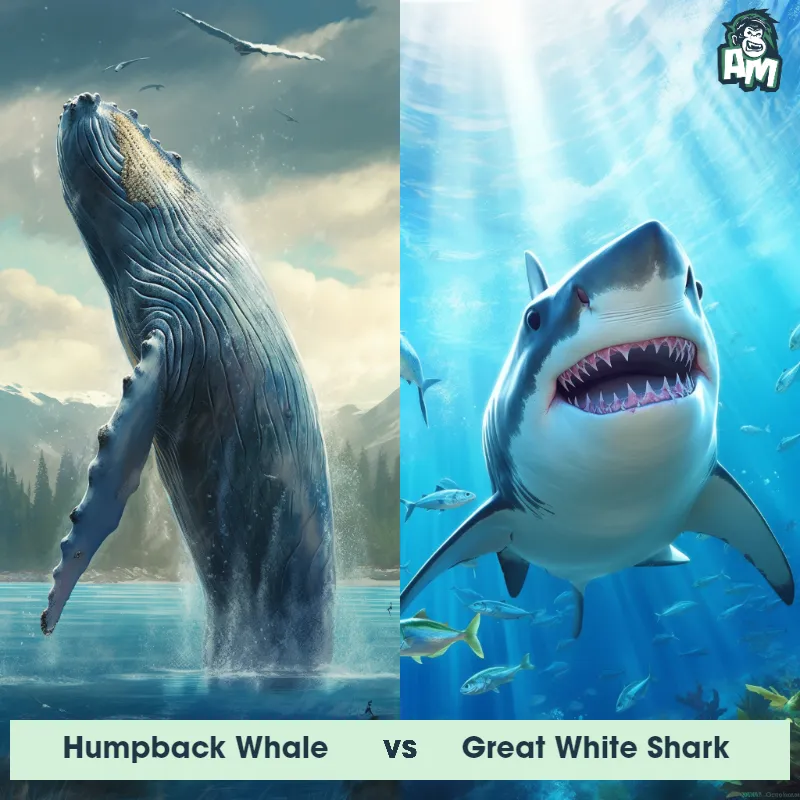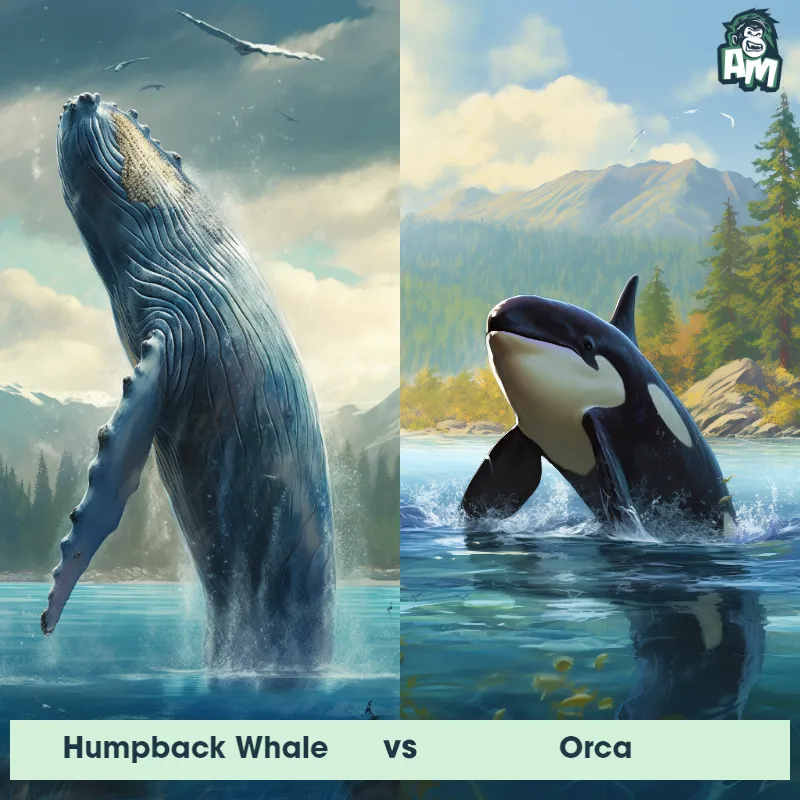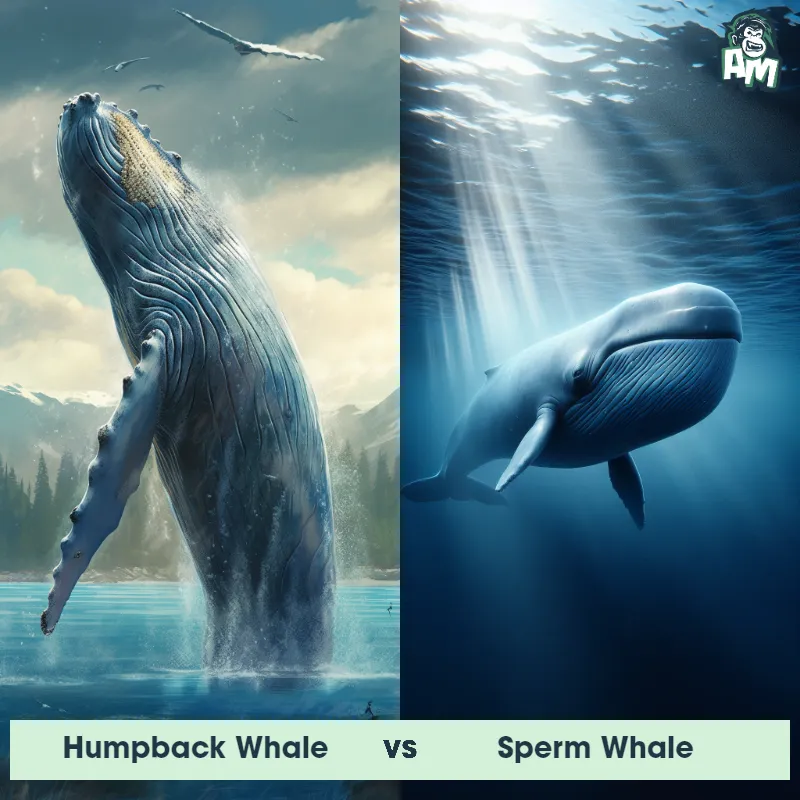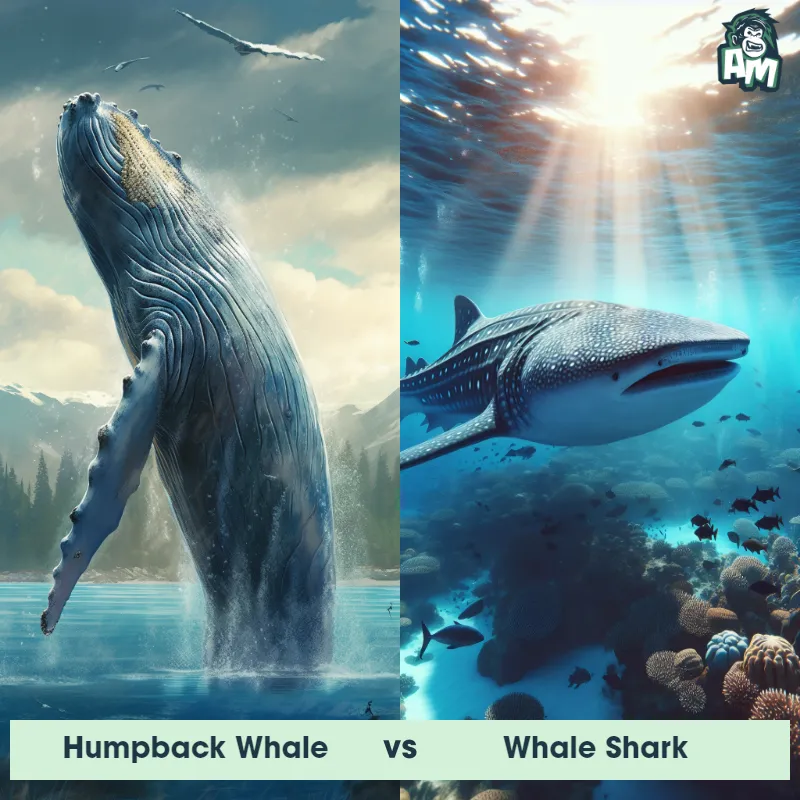The Humpback Whale
The Humpback Whale, scientifically known as Megaptera novaeangliae, is a majestic marine mammal that belongs to the baleen whale family. They are recognizable by their long flippers and knobby appearance, with a body length that can reach up to 52 feet and weigh up to 40 tons. Humpback Whales have distinct black and white patterns on their undersides, a large head, a series of ventral grooves, and a signature hump in front of their dorsal fin. These whales are known for their acrobatic behaviors such as breaching, tail-slapping, and spy-hopping, making them an enchanting sight to witness in their natural habitat. They are also known for their beautiful songs, which can be heard during mating seasons.

| Humpback Whale | |
|---|---|
| Size | Up to 50 feet (15.2 meters) |
| Weight | Up to 40 tons (36 metric tons) |
| Speed | Speed: 3-9 mph (4.8-14.5 km/hr) |
| Key Strength | Powerful tail for swimming and breaching |
| Biggest Weakness | Vulnerable to hunting and entanglement in fishing gear |
| Scientific Name | Megaptera novaeangliae |
| Family | Balaenopteridae |
| Habitat | Oceans |
| Geography | Worldwide |
| Diet | Krill, small fish, and plankton |
| Lifespan | 45 years - 100 years |

The Humpback Whale
The Humpback Whale, scientifically known as Megaptera novaeangliae, is a majestic marine mammal that belongs to the baleen whale family. They are recognizable by their long flippers and knobby appearance, with a body length that can reach up to 52 feet and weigh up to 40 tons. Humpback Whales have distinct black and white patterns on their undersides, a large head, a series of ventral grooves, and a signature hump in front of their dorsal fin. These whales are known for their acrobatic behaviors such as breaching, tail-slapping, and spy-hopping, making them an enchanting sight to witness in their natural habitat. They are also known for their beautiful songs, which can be heard during mating seasons.
Fun Fact: Humpback Whales are known for their incredible long-distance migrations, traveling up to 16,000 miles each year, which is one of the longest migration routes of any mammal on earth.
| Humpback Whale | |
|---|---|
| Size | Up to 50 feet (15.2 meters) |
| Weight | Up to 40 tons (36 metric tons) |
| Speed | Speed: 3-9 mph (4.8-14.5 km/hr) |
| Key Strength | Powerful tail for swimming and breaching |
| Biggest Weakness | Vulnerable to hunting and entanglement in fishing gear |
| Scientific Name | Megaptera novaeangliae |
| Family | Balaenopteridae |
| Habitat | Oceans |
| Geography | Worldwide |
| Diet | Krill, small fish, and plankton |
| Lifespan | 45 years - 100 years |
Match Highlights
Humpback Whale Matchups
We use AI to simulate matchups between the Humpback Whale and other animals. Our simulation considers size, strength, and natural predatory behaviors to determine the most likely outcome.
Humpback Whale: Diet, Predators, Aggression, and Defensive Behaviors
What do Humpback Whales eat?
Humpback Whales are primarily filter feeders that consume small fish, krill, and plankton. They are known for their unique feeding behavior called "lunge feeding," where they open their mouths wide while swimming rapidly toward schools of fish or shoals of krill, then closing their mouths and filtering out the water through baleen plates inside their mouths.
Do Humpback Whales have any predators?
Humpback Whales are impressive creatures with few natural predators due to their large size. However, they may face threats from killer whales (also known as orcas) and large sharks such as great white sharks. Orcas are known to occasionally hunt and kill Humpback Whales, especially calves or weakened individuals.
Are Humpback Whales aggressive towards humans?
Humpback Whales are not typically aggressive towards humans and are known for their curious and playful behavior around boats and divers. However, it is essential to remember that they are wild animals and should be respected from a safe distance to avoid any potential dangers.
Do Humpback Whales fight with other whales?
Humpback Whales are not known to engage in aggressive physical fights with other whales. Instead, they may exhibit competitive behaviors during breeding season, such as males competing for females with displays of strength and vocalizations.
How do Humpback Whales defend themselves against threats?
Humpback Whales have several defense mechanisms to protect themselves from predators or other potential dangers. They can use their large size and powerful tail flukes to slap the water surface, creating loud sounds that may startle or warn off threats. Additionally, Humpback Whales may travel in groups or pods, providing safety in numbers and increasing their chances of deterring predators.
What is the biggest weakness of Humpback Whales in a fight?
Humpback Whales' biggest weakness in a fight is likely their vulnerability when separated from the group or pod. While they are massive and powerful creatures, they may face challenges when isolated and targeted by predators, especially when defending calves or facing coordinated attacks from threats like killer whales. Their ability to communicate and coordinate with other whales within their pod is crucial for their defense and survival.
Fun Fact: Despite their massive size, Humpback Whales are filter feeders, mostly feeding on small schooling fish like herring, sardines, and krill. They use a unique feeding technique called bubble net feeding, where they blow bubbles to create a ring of bubbles around their prey, forcing them into a concentrated area for efficient feeding.
Fun Fact: Humpback Whales are renowned for their complex and melodic vocalizations, often referred to as "whale songs." These songs are not just random sounds; they consist of distinct patterns and phrases that can last from 10 to 20 minutes and can be heard by other whales for miles. Each population of Humpback Whales has its own unique song, which can evolve and change over time.



